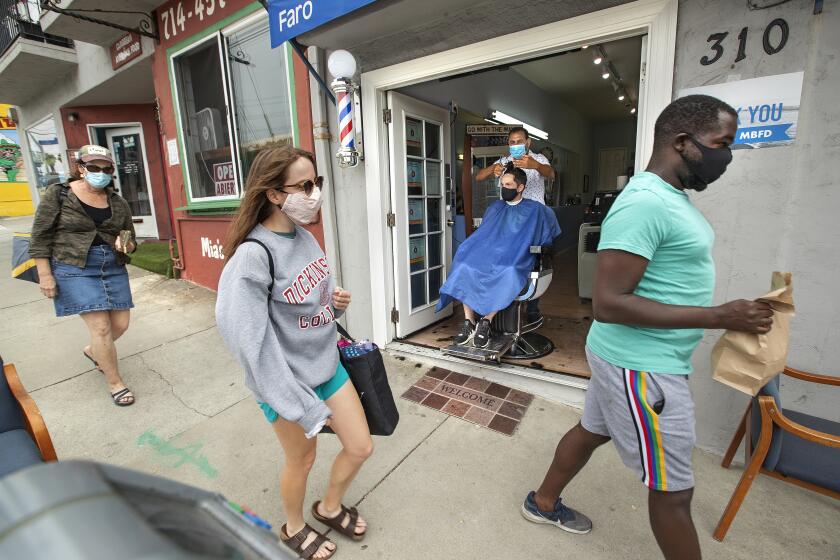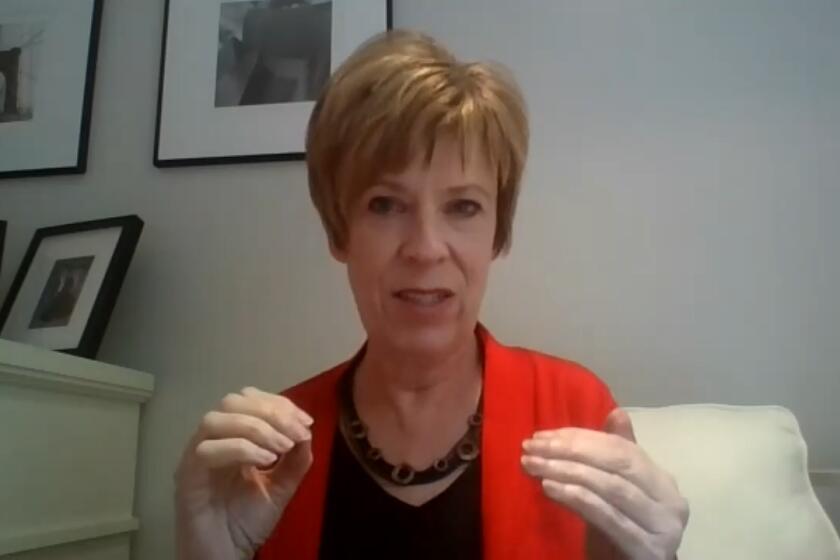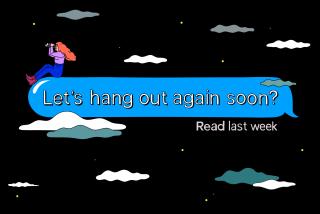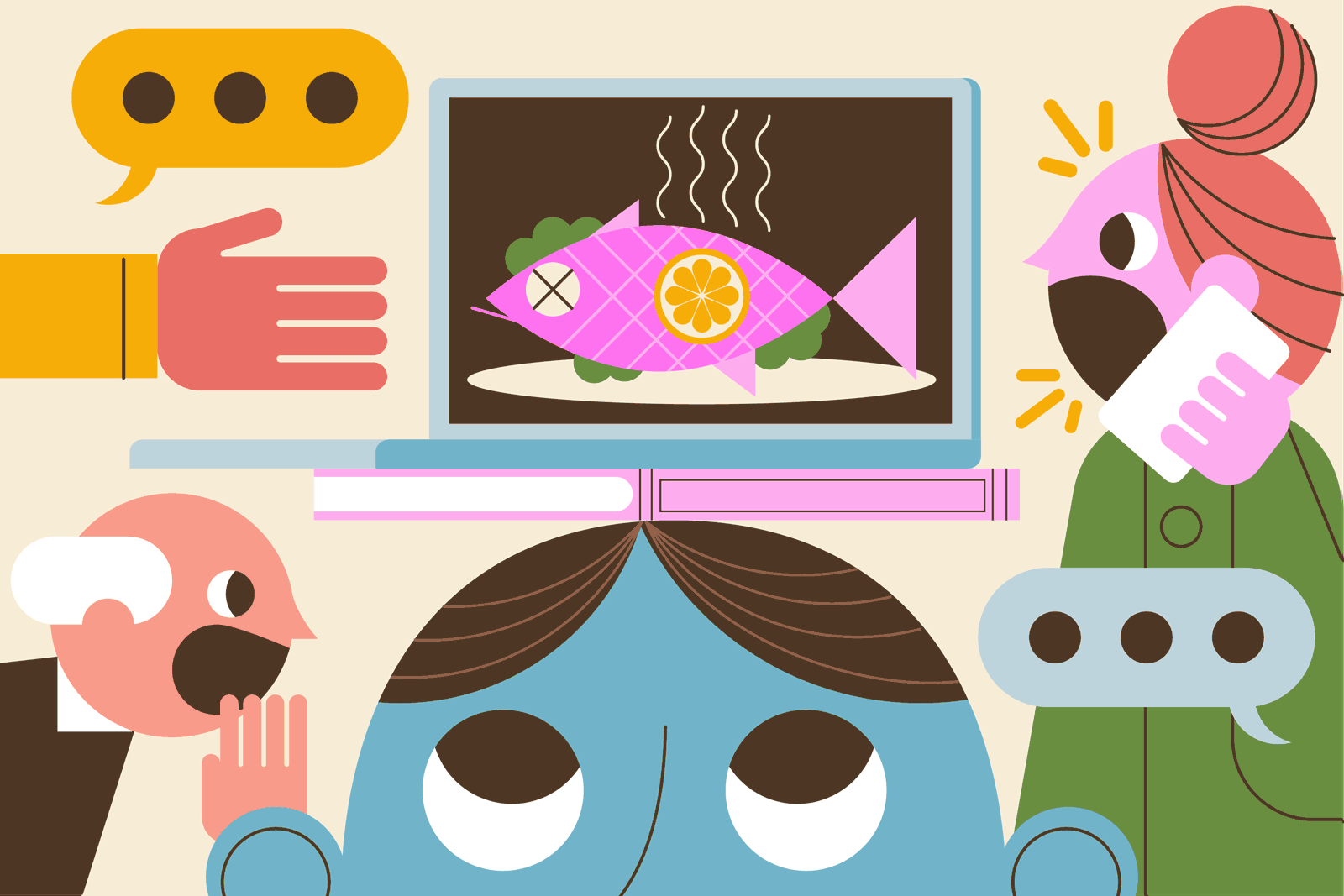The social etiquette of social distancing: How to say ‘back off,’ politely
You suited up in your homemade face covering and disposable gloves to buy groceries. But the person behind you in the checkout line is inching closer and closer. What do you say? What do you do?
In the age of self-quarantines and social distancing, it’s a whole new world of etiquette. Things that were once considered polite — handshakes, holding the door, helping a neighbor with their arms full — are now verboten.
The most gracious, courteous thing you can do for others right now is to stay at home. When you absolutely must go out, though, you may find some people apparently haven’t heard of this whole stand-at-least-six-feet-apart thing.
Part of the reason you might be having trouble asserting physical boundaries right now is that this is so new to all of us. In many cases, it goes against our deeply ingrained patterns of behavior. We’re used to standing right behind people in line at the grocery store, and cheerfully passing mere inches from each other on the sidewalk.
We have to overcome our own normal behaviors and also figure out how to modulate other people’s behaviors. That can be a challenge.
“I don’t think we like asking things of others or telling people they’re doing something wrong,” said Lizzie Post, the president of the Emily Post Institute and the author of several books on modern etiquette. “We like having expectations and standards to follow. They’re what glue us together as a society. And at the same time, we don’t like being told what to do.”
Trying to get a handle on how California is reopening and what it means for you? Our guide includes updates and tips for remaining healthy and sane.
So how do you politely tell someone “hey, back off”? The exact words you use matter less than how you deliver them, Post said. Focus on being friendly, pleasant, and nonthreatening. Everyone is stressed out right now; the last thing you want is to do is escalate the situation.
“Rather than putting up a strong arm and saying, ‘Um, can you back up six feet, please?’ the other way you can say it to someone is, ‘I’m sorry. I’m trying to maintain the six-foot distance. Do you mind giving me a little more space, please?’” Post said.
You can also “borrow authority” if you don’t feel comfortable asserting yourself. Alison Green, who writes the workplace advice blog Ask A Manager, says that in this case, you can blithely defer to health officials. Something like, “Oh, I think we’re supposed to be staying six feet apart, if you wouldn’t mind just backing up a little bit,” or “You know, I think the CDC is saying we should stay six feet apart, so let’s keep some distance.”
Try to give others the benefit of the doubt. We’re not used to staying six feet away from all people at all times. We all have a lot on our minds right now, and it’s possible they just aren’t paying attention to where they’re standing.
“Don’t go into it with the assumption that they’re totally ignorant or making some sort of point,” Green said. “If you’re just warm and nice about it, it’s fine. If you sound chilly, it’s going to feel chilly to them.”
Out in public, you might feel like you’re locked in a permanent game of “Frogger” with your fellow sidewalk patrons. Remember that you do have the option to be the one to physically move yourself, even if you feel you have the right of way.
Americans “have this cultural ‘why should I be the one to move?’ thing in us, and it is not our friend right now,” said Jennifer Peepas, who writes the advice blog Captain Awkward. Resist that urge to stand your ground, she said, and remember that the kindest thing you can do for others and for yourself right now is to maintain that six-foot barrier.
If you’re in a situation where you’re coming up behind someone and they may not be aware of it — for instance, if you’re jogging — it’s definitely your responsibility to be the one to move, she said.
Is it safe to have sex with my partner or with a person I met on Tinder? Can I pick my nose at home? Do I need to disinfect my groceries? A virologist answers.
Paula Cannon, a virologist and professor at the Keck School of Medicine at USC, said the six-feet-apart message is only meant to apply to situations where you’re standing still. She prefers to keep more distance than that. Encounters on the sidewalk or in a store are a chance for you to do something pretty amazing: Model kind, courteous, safe behavior for others.
“If I’m out walking in my neighborhood and somebody is walking up the sidewalk, I walk in the road,” she said. “I put 10 to 20 feet between me and them. I wave, I smile. What I’m doing is modeling appropriate behavior, and I’m doing it out of a sense of care and consideration. I think it’s important to message to other people [that] your behavior — no matter how weird it is — you’re doing it because you care about them, not because you’re afraid of them.”
In normal, nonpandemic times, fleeing into the street when someone approaches you on the sidewalk might be considered rude. Even now, it feels strange. But it’s also the most thoughtful thing you can do for your fellow human beings.
More to Read
Sign up for The Wild
We’ll help you find the best places to hike, bike and run, as well as the perfect silent spots for meditation and yoga.
You may occasionally receive promotional content from the Los Angeles Times.













